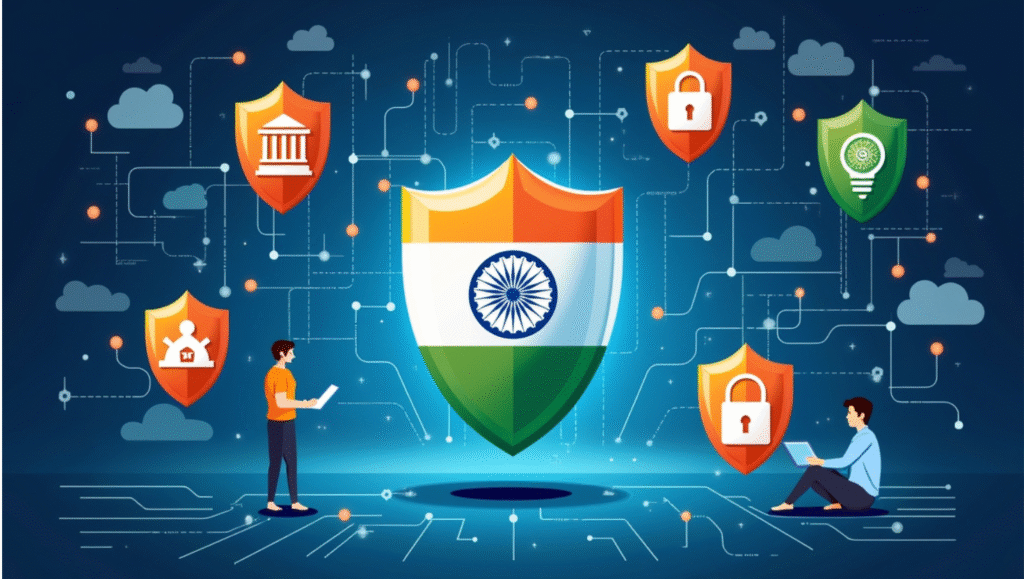Protecting India’s Digital Economy: Tackling Cyber Frauds and Building Digital Trust
Syllabus: Economy (UPSC GS III)
Source: TH
Context
India’s digital economy faces rising threats from new forms of cybercrime such as phishing, UPI/OTP scams, identity theft, and “digital arrest” frauds. These crimes are becoming more sophisticated and widespread.
India’s Cybercrime Situation
- Scale of the problem: Over 13.9 lakh cybercrime cases were reported in 2023 (NCRB). Many more go unreported due to fear, shame, or lack of trust in institutions.
- Example: In 2025, a 78-year-old retired banker lost ₹23 crore in a “digital arrest” scam.
- Common Tactics: Cybercriminals exploit emotions like fear and urgency through phishing links, fake job or loan offers, OTP/UPI scams, and impersonation of government officials.
- Vulnerable Groups:
- Elderly and rural citizens: Less digitally aware but financially exposed.
- Banks: Often issue generic advisories and fail to detect unusual transactions.
- Cyber police: Limited manpower and advanced tools restrict their ability to respond quickly.
Legal and Institutional Aspects
- Right to Privacy (2017): Supreme Court declared privacy a fundamental right under Article 21, covering personal and financial data.
- Article 300A: Protects citizens’ property — now relevant for digital wealth and financial data.
- RBI Regulations: Mandate “zero liability” protection for victims in specific fraud cases.
- CERT-In: The national cybersecurity agency, though currently reactive and not equipped for local-level fraud tracking.
Key Threats to the Digital Economy
- Social Engineering: Fraudsters use fear and trust to trick victims through phishing and UPI scams.
- Identity Theft: Personal data such as Aadhaar or PAN is stolen due to weak encryption and frequent data leaks.
- Mule Accounts: Fraudsters use fake or weak KYC accounts to hide stolen money.
- Institutional Negligence: Banks and cyber units often miss warning signs.
- Cross-Border Scams: International networks exploit jurisdiction gaps and weak coordination among countries.
Government and Institutional Efforts
- Regulatory Safeguards:
- RBI’s zero liability rules.
- Digital Personal Data Protection Act, 2023.
- Institutional Mechanisms:
- CERT-In for cybersecurity incident response.
- Indian Cyber Crime Coordination Centre (I4C) for national coordination.
- Awareness Initiatives:
- Cyber Jagrookta Abhiyan and RBI Kehta Hai campaigns for digital safety education.
- Technology Steps:
- AI-based fraud detection tools in some banks.
- National Cyber Crime Reporting Portal for complaints.
The Way Forward
- Use of AI & Technology: Deploy AI/ML for real-time fraud alerts and blockchain for secure KYC.
- Stronger Cyber Police: 24×7 response units, better training, and advanced forensics.
- Bank Responsibility: Enforce KYC rules, penalise delays in freezing fraud accounts, and improve alert systems.
- National Coordination: Create a unified “Fraud Intelligence Grid” connecting banks, telecom firms, and agencies.
- Citizen Awareness: Focus on senior citizens, students, and rural communities to prevent scams.
- Global Cooperation: Work with Interpol, FATF, and partner countries to counter transnational fraud.
Conclusion
Protecting India’s digital economy needs proactive prevention — not just post-fraud action. Strengthening cyber policing, bank accountability, and digital literacy—along with AI-based monitoring—will help build a safer and more trustworthy digital financial system.











